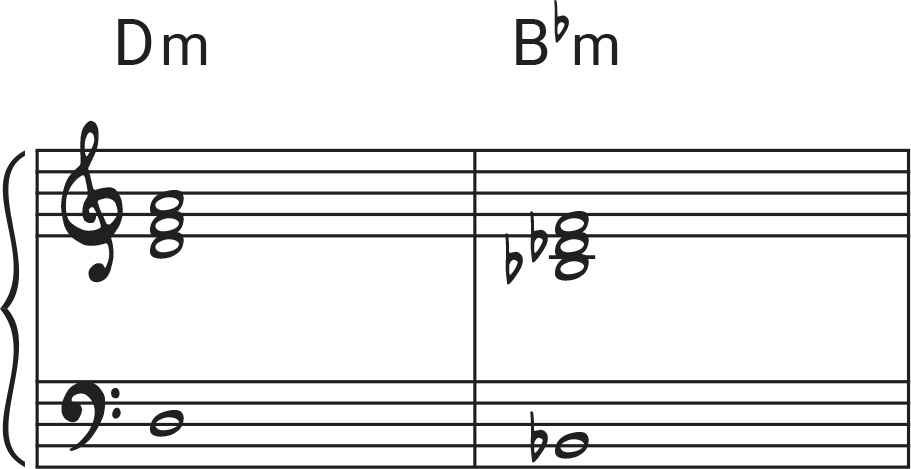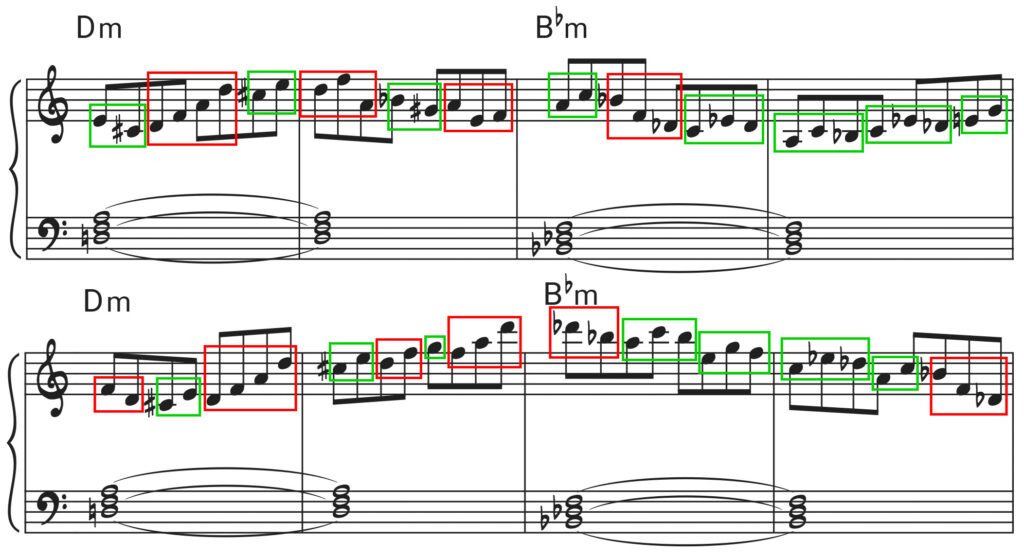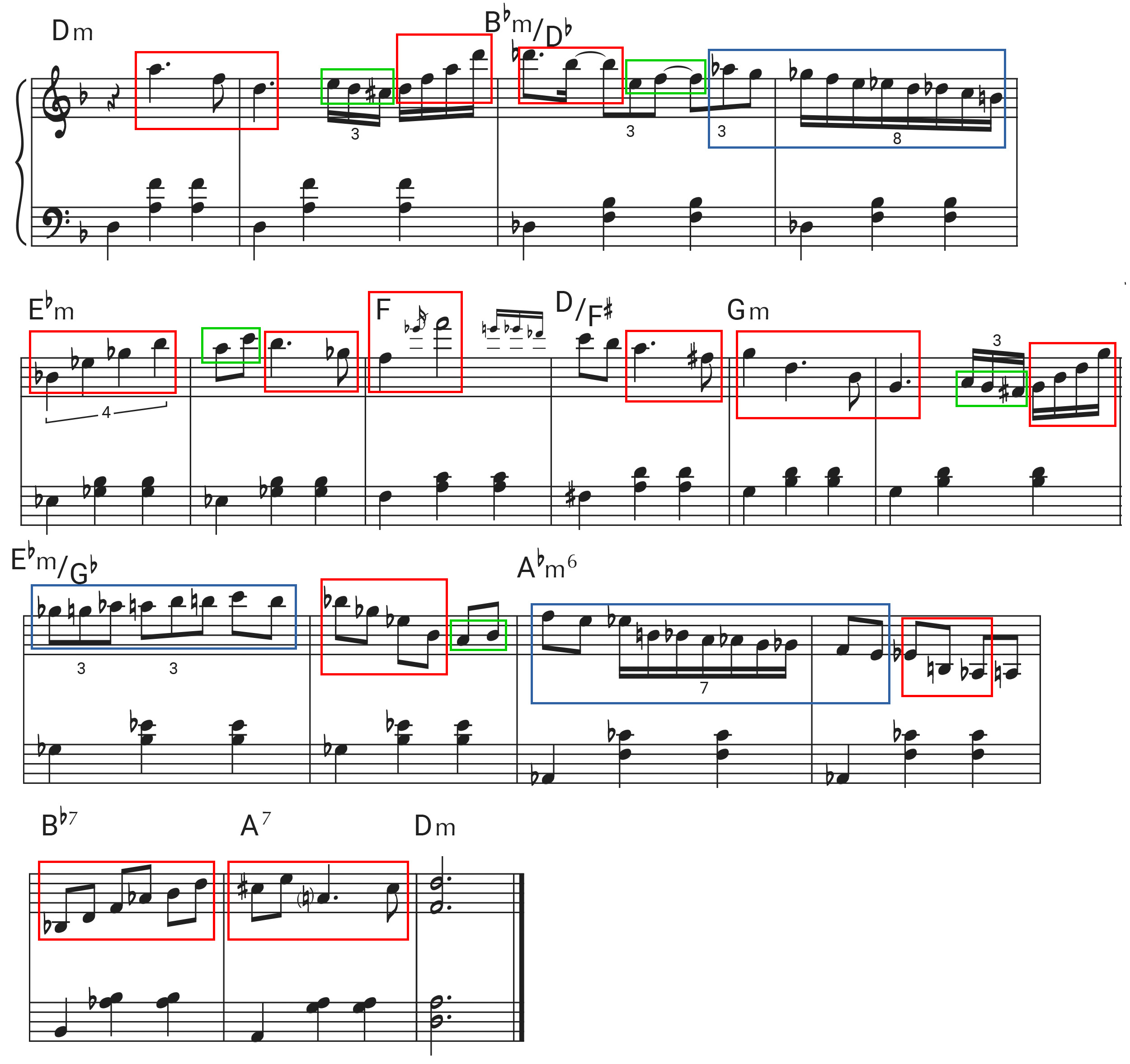Two weeks ago, I released a piece titled “Sterrenhemel (Starry Sky)”, a mischievous, dark but playful piano waltz. In this blog post, I’ll walk you through a key technique I used during its composition: using unrelated triads and turning their arpeggios into interesting melodies.
Give it a listen:
Step 1: pick two triads
For this composition techqniue, you can pick any two triads, but I like to pick chords that are not related to each other very much, as this will create more interesting melodies later in the process.
The first two chords of “Sterrenhemel” are D minor and Bb minor:

There’s no obvious harmonic link between D minor and Bb minor in traditional key-based music theory. This presents an interesting challenge during the composition process – finding a way to cohesively connect these unrelated chords with a melody. The advantage is that it nudges you out of your comfort zone, helping you discover unique melodies that you might not have thought of otherwise. To help you find a unique combination of triads, it might be useful to use my Chord Progression Creator.
Step 2: arpeggiate
Our first step in connecting these chords melodically is by using the triads themselves. In other words, we’ll be creating melodies from the notes that form the chords. So, for D minor, we can use D, F, A, and for Bb minor, we’re looking at Bb, Db, F.
Start by playing a simple arpeggio, playing the notes in sequence:

Next, experiment with variations and inversions of the triads, arpeggiating the chords up and down:

Step 3: use approach notes, enclosures and ornaments
Just using chord tones is a bit boring though. We can embellish these arpeggios with ornaments or non-chord tones. One particular technique that we can use here is enclosures.
A simple enclosure involves picking a chord tone, playing the approach note (the note a half-step below the target note), then the upper diatonic neighbor (i.e. the next step of the scale), before resolving to the original note. For instance, with D (the first note in D minor), you’d go: C sharp, E, D. Continue this process for the other chord tones (circled in red):

A different type of enclosure is the following ornament: upper neighbor, target note, approach note, and target note. Again, try this for each chord tone:

Step 4: combine arpeggios and enclosures
Next, you can combine these enclosures with the arpeggios from the previous step, and you’re starting to create melodies that are starting to sound quite interesting. Below is a version that combines enclosures (in green) with arpeggios (in red):

Step 5: melody creation
Now, it’s time to mesh these elements together, building an engaging melody from our D minor and Bb minor chords. Using arpeggios, approach notes, and additional techniques such as chromatic lines (moving up or down by half steps), we can create an opening motif, a short melodic phrase that will be the starting point of our composition.
Below is the beginning of “Sterrenhemel” with arpeggios (in red), enclosures (in green), and a chromatic line (in blue):

Step 6: develop the melody with additional chords
With a compelling opening motif in hand, it’s time to further develop our piece. We can do this by adding more chords and fleshing out a harmonic structure. This isn’t just about randomly adding chords, though – it’s about thoughtfully extending the musical journey that your opening motif has started.
I came up with this chord progression:
Dm – Bbm – Ebm – F – D/F#
Then, to further develop the piece and drive the piece back to D minor, we repeat the progression a fourth up, but with a different ending:
Gm – Ebm – Abm – Bb7 – A7
Just as we did with the D minor and Bb minor chords, we can now continue to apply our technique of combining arpeggios with enclosures and chromatic lines. This is how I constructed a melody on the above chord progression:

Conclusion
I hope you enjoyed this breakdown of my piece and this composition technique. Let me know in the comments below what you think and if you end up using it to compose yourself!
If you’d like, you can purchase the sheet music of this piece here.
Happy composing!
Find the full exercise in video format below:

